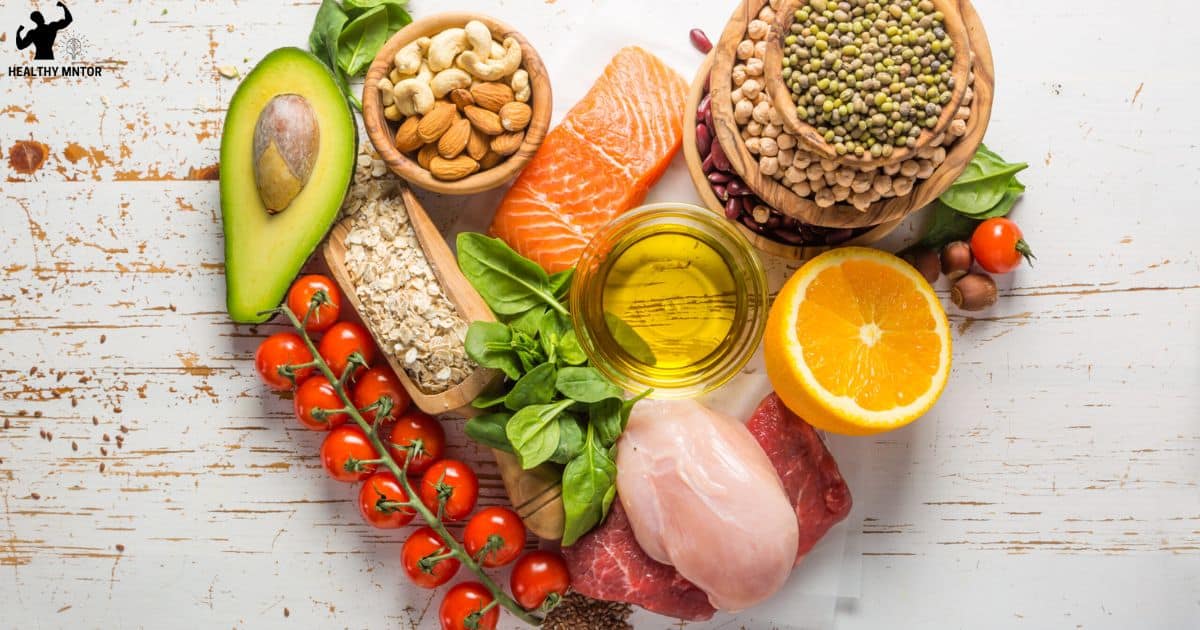Indulging in the creamy, tangy delight of pimento cheese can be a tempting treat. But is this beloved Southern staple truly as healthy as we believe it to be? In this article, we delve into the nutritional value of pimento cheese, uncover the calorie content, and explore the potential health benefits and drawbacks. Armed with evidence-based insights, we aim to guide you in making informed choices about incorporating pimento cheese into a well-balanced, nutritious diet.
Key Takeaways
- Pimento cheese is a good source of protein and calcium, essential for healthy bones and muscles.
- Pimento cheese contains vitamins A and C from the pimentos, which are beneficial for overall health.
- Pimento cheese can boost mood due to the presence of tryptophan in cheese.
- While pimento cheese has nutritional benefits, it is high in saturated fat and calories, and moderation is important to avoid negative health effects.
The Nutritional Value of Pimento Cheese
Examining the nutritional content of pimento cheese reveals important insights into its overall health benefits and potential drawbacks. Pimento cheese is typically made from a blend of cheddar cheese, mayonnaise, pimentos, and spices. On the positive side, it is a good source of protein and calcium, both essential for maintaining healthy bones and muscles. However, pimento cheese is also high in saturated fat and sodium, which can contribute to heart disease and high blood pressure when consumed in excess. Moderation is key when enjoying pimento cheese, as its calorie and fat content can add up quickly. Additionally, individuals with lactose intolerance or sensitivity to dairy should be cautious, as it contains dairy-based ingredients. Overall, while pimento cheese can be enjoyed as part of a balanced diet, it is important to be mindful of portion sizes and consider healthier alternatives when necessary.
Understanding the Calorie Content of Pimento Cheese
Typically, individuals should be aware that pimento cheese is often high in calories when consumed frequently. While it can be a delicious and indulgent treat, it is important to understand the calorie content in order to make informed choices about its consumption. To help a person improve his or her health literacy, here are some key points to consider:
- Pimento cheese is typically made with high-fat ingredients such as mayonnaise and cheese, which contribute to its calorie content.
- The calorie content can vary depending on the specific recipe and ingredients used.
- On average, a serving of pimento cheese can contain around 150-200 calories.
- Consuming pimento cheese in moderation as part of a balanced diet is recommended to avoid excessive calorie intake.
- It is important to be mindful of portion sizes when enjoying pimento cheese to help manage calorie intake.
Understanding the calorie content of pimento cheese is just one aspect of evaluating its overall nutritional value. Now, let’s examine the health benefits of pimento cheese.
Examining the Health Benefits of Pimento Cheese
To fully explore the nutritional aspect of pimento cheese, it is vital to delve into the potential health benefits it may offer. While pimento cheese is often known for its indulgent taste and creamy texture, it does contain some ingredients that can provide certain health benefits. Let’s take a closer look at the potential advantages of consuming pimento cheese:
| Health Benefits | Evidence | |—————–|———-| | Good source of protein | Pimento cheese contains cheese, which is a rich source of protein. Protein is essential for building and repairing tissues, supporting immune function, and maintaining healthy hair and nails. | | Provides vitamins and minerals | Pimentos, which are a key ingredient in pimento cheese, are packed with vitamins A and C. These vitamins are important for immune function, vision health, and collagen production. | | May boost mood | Cheese contains an amino acid called tryptophan, which can help increase the production of serotonin, a neurotransmitter that regulates mood and promotes feelings of well-being. |
While pimento cheese does offer potential health benefits, it is important to be aware of its potential drawbacks as well.
Potential Drawbacks of Consuming Pimento Cheese
Despite its potential health benefits, it is important to be mindful of the potential drawbacks associated with consuming pimento cheese, especially if you’re aiming for a Healthy Pimento Cheese option. While pimento cheese can be a tasty and convenient snack, it is important to consume it in moderation due to several factors:
- High in saturated fat: Pimento cheese is typically made with mayonnaise and cheese, both of which are high in saturated fat. Consuming too much saturated fat can increase the risk of heart disease.
- High in sodium: Pimento cheese often contains added salt, which can contribute to high blood pressure and other health issues.
- Calorie-dense: Pimento cheese is a calorie-dense food, meaning it contains a high number of calories in a small serving size. Overconsumption can lead to weight gain.
- Potential allergens: Some individuals may have allergies or sensitivities to the ingredients used in pimento cheese, such as dairy or peppers.
- Processed ingredients: Pimento cheese often contains processed ingredients, which may have lower nutritional value compared to fresh, whole foods.
To enjoy pimento cheese while minimizing potential drawbacks, it is recommended to consume it in moderation and pair it with healthier options, such as whole grain crackers or fresh vegetables.
Is Pimento Cheese a Healthy Snack Option
One important consideration when evaluating the healthiness of pimento cheese as a snack option is its nutritional profile. While pimento cheese is undoubtedly delicious, it may not be the healthiest choice when it comes to snacking. Pimento cheese is typically made from a combination of cheese, mayonnaise, and pimento peppers. This means that it can be high in saturated fat, cholesterol, and sodium. These components, when consumed in excess, can contribute to health issues such as heart disease and high blood pressure. However, it’s important to note that moderation is key. Enjoying pimento cheese as an occasional treat can still fit into a balanced diet. Additionally, opting for healthier versions with reduced-fat cheese and lighter mayonnaise can help make pimento cheese a slightly healthier snack option.
The Ingredients of Pimento Cheese and Their Impact on Nutrition
What are the ingredients of pimento cheese and how do they impact its nutrition? Pimento cheese is typically made with a combination of grated cheese, mayonnaise, pimentos, and various spices. While pimento cheese can be a delicious and versatile snack option, it is important to consider its nutritional value. Here’s how the ingredients impact the nutrition of pimento cheese:
- Cheese: Provides protein and calcium, but can also be high in saturated fat and sodium.
- Mayonnaise: Adds creaminess, but is high in calories, fat, and cholesterol.
- Pimentos: Contain vitamins A and C, but may contribute to the sodium content.
- Spices: Can enhance the flavor without significantly impacting the nutrition.
Making Informed Choices: How to Incorporate Pimento Cheese Into a Healthy Diet
To incorporate pimento cheese into a healthy diet, it is important to make informed choices about portion sizes and complementary ingredients. While pimento cheese can be high in calories, fat, and sodium, it can still be enjoyed in moderation as part of a balanced diet. By controlling portion sizes and selecting complementary ingredients, you can create a healthier version of this beloved Southern dish.
Here is a table that provides guidance on incorporating pimento cheese into a healthy diet:
| Portion Size | Complementary Ingredients | Healthier Alternatives | |——————|——————————|—————————| | Smaller portions | Whole grain crackers | Celery sticks | | | Sliced cucumber | Carrot sticks | | | Bell pepper strips | Whole grain bread |
FAQ’s
Can Pimento Cheese Be Considered a Low-Fat or Low-Calorie Food?
Pimento cheese is not typically considered a low-fat or low-calorie food. It is typically made with high-fat ingredients such as mayonnaise and cheese, which contribute to its rich taste but also increase its calorie and fat content.
What Are Some Potential Allergens That May Be Present in Pimento Cheese?
Pimento cheese may contain potential allergens such as milk, cheese, and peppers. It is important for individuals with allergies or dietary restrictions to carefully read labels and consult with healthcare professionals to ensure safe consumption.
Are There Any Specific Dietary Restrictions or Conditions That Should Avoid Consuming Pimento Cheese?
Individuals with lactose intolerance, dairy allergies, or those following a vegan or plant-based diet should avoid consuming pimento cheese due to its high dairy content. Additionally, those on low-sodium or low-fat diets may need to limit their intake.
Can Pimento Cheese Be a Good Source of Protein?
Pimento cheese can be a good source of protein due to its main ingredients, such as cheese and mayonnaise. However, it is important to consider portion sizes and other nutritional factors when incorporating it into a balanced diet.
What Are Some Alternative Options for Those Who Cannot or Choose Not to Consume Dairy?
For those who cannot or choose not to consume dairy, there are several alternative options available. These include plant-based milk alternatives like almond or soy milk, as well as dairy-free cheeses made from nuts or soy.
Conclusion
In conclusion, while pimento cheese can be a tasty and satisfying snack option, it may not be as healthy as one might think. The high calorie and fat content, along with potential additives and preservatives, can be a drawback for those seeking a nutritious diet. However, when consumed in moderation and as part of a well-balanced meal plan, pimento cheese can still be enjoyed as an occasional treat. Remember the old adage: “Everything in moderation.”







